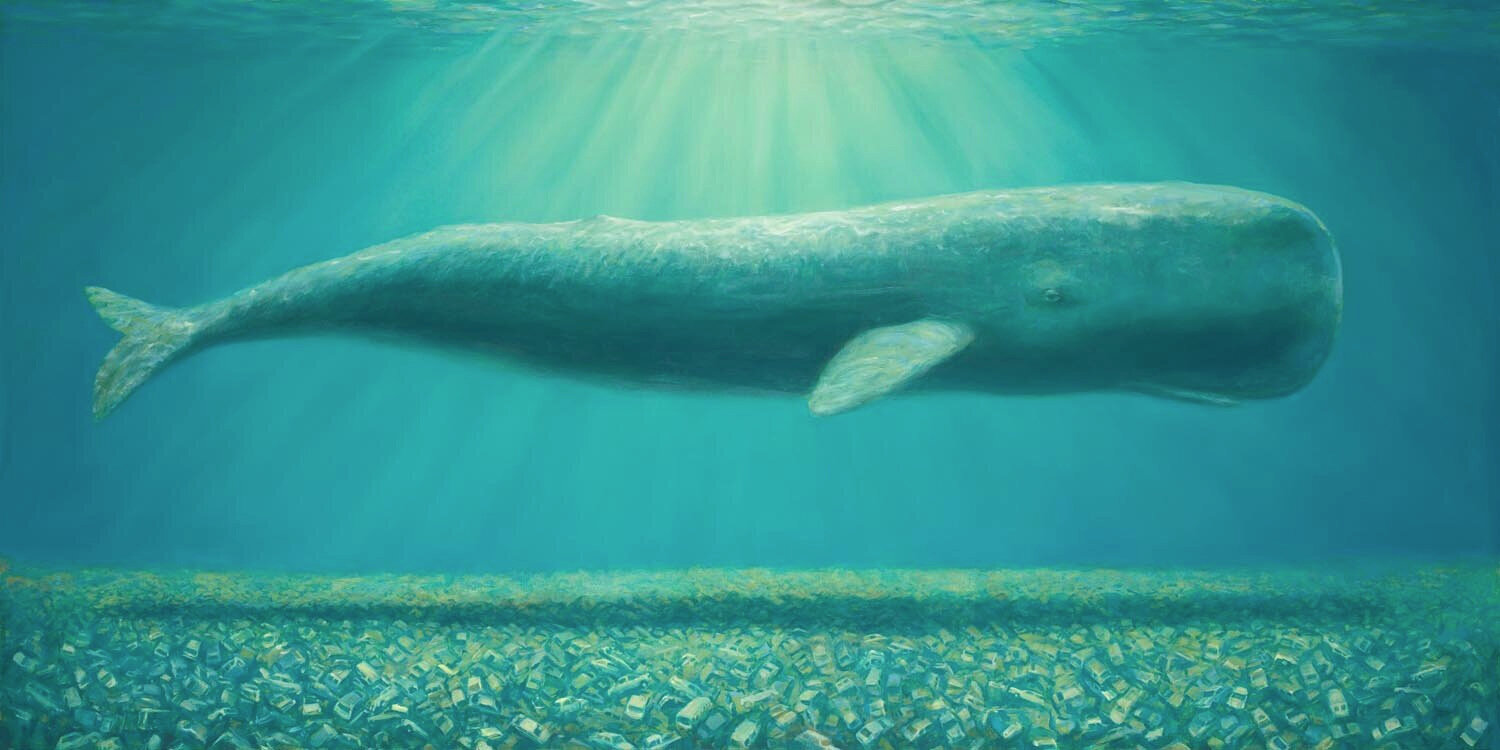As an artist, I am always striving to advance my craft and technical ability. I try to challenge myself and seek ways to improve my skills, so my art can flourish. No doubt every artist wants their latest creation to transcend their previous efforts. I believe this is what compels us to continue making new artwork. We optimistically hope that our next piece could be our masterpiece. Of course there are good days and bad days in the studio. We sometimes encounter roadblocks along the way. But ultimately, over the long haul, it is very gratifying to witness the unfolding of our art.
Last year I had an idea for a painting I wanted to do. Not only did the concept interest me, but it seemed like a good technical challenge and this intrigued me. I wanted to paint an enormous whale, shown underwater, suspended above a landscape of sunken cars. The primary technical challenge I foresaw with this project would be to capture the appearance of sunlight filtering through water. I had never attempted anything like this before, and I was not sure if I could convincingly paint the shafts of light streaming through the water, and dappling across the whale and cars. The painting would also need to be quite large, in order to convey the immensity of the scene. I often find it frustrating working on large canvases, as the painting surface tends to bounce and flex a lot as I am painting upon it. I therefore decided to stretch my canvas over a large, cradled panel, constructed from a 4x8 foot sheet of plywood. This would give me a solid painting surface with no bounce.
I began by creating some small color studies to figure out my composition. My idea was to portray the whale in profile, with its immense body casting a shadow upon the cars below.
I then made a large charcoal drawing of my idea on paper. This allowed me to determine the tonality and the amount of visual information I wanted in my final painting. I wasn’t interested in depicting a specific species of whale, I simply wanted my creature to feel “whale-like”. The charcoal study helped me determine the size ratio I wanted between the whale and the cars below it. It also helped me figure out how the vehicles would appear strewn across the ocean floor.
After completing my charcoal drawing, I began working on the full size painting. Here you see me creating the under-painting using a wash of transparent yellow. (Note the adjacent reference studies on the wall.)
I gradually built up my painting, adding layer after layer of greens and blues. I would refer to my color studies and charcoal drawing for reference. Figuring out the lighting proved to be the most challenging part of the project. I found that subtle shifts in contrast made a big difference in how convincing everything appeared.
I call this painting Leviathan. I’m fairly happy with how it turned out. The scene is enigmatic. It prompts questions more than it gives answers. For me, this painting is an allegory about climate change, which I consider to be the most significant issue we face today. The sunken cars represent a fossil-fuel based society that has been obliterated by rising sea levels. The whale is the lone surviving witness to the aftermath, or perhaps it is the metaphorical elephant in the room, signifying an enormous problem that no one is willing to confront.






